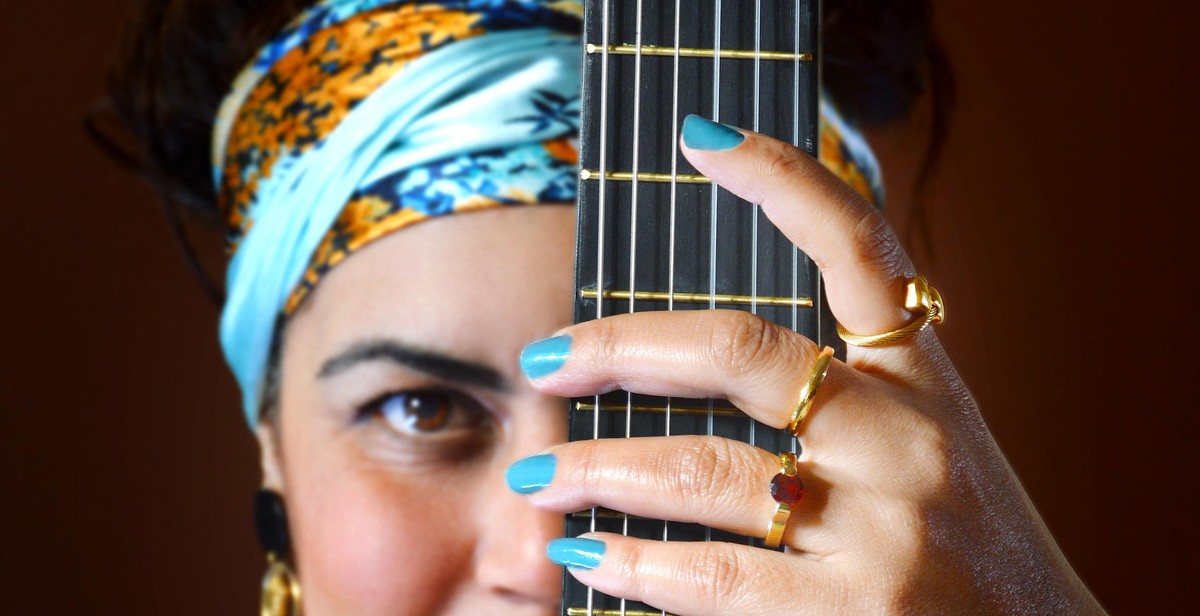How to Play the Ney: Beginner’s Guide to Arabic Flute Techniques and Maqamat
The ney is a traditional Middle Eastern flute that has been played for centuries. It is a simple instrument made of a hollow reed, but it produces a unique and haunting sound that is instantly recognizable. Playing the ney requires a certain level of skill and technique, but with practice and patience, anyone can learn to play.
Arabic Flute Techniques
Before you begin playing the ney, it’s important to understand the basic techniques used in Arabic flute playing. One of the most important techniques is called “embouchure,” which refers to the way you shape your mouth and lips to produce different sounds. Other important techniques include breath control, finger placement, and vibrato.
Maqamat
Maqamat are the different scales used in Arabic music. There are many different maqamat, each with its own unique sound and character. Learning to play the ney involves not only mastering the instrument itself but also learning to play within the context of different maqamat.
In this beginner’s guide to playing the ney, we will cover the basics of Arabic flute techniques and maqamat, as well as provide tips and exercises to help you improve your playing. Whether you are a complete beginner or have some experience with other instruments, this guide will give you a solid foundation for playing the ney.

What is the Ney?
The Ney is a type of wind instrument that is commonly used in Arabic music. It is a long, thin flute that is made from a single piece of reed or bamboo. The Ney is one of the oldest musical instruments in the world, with a history that dates back thousands of years.
History of the Ney
The origins of the Ney can be traced back to ancient Persia, where it was known as the “nay.” Over time, the instrument spread throughout the Middle East and became an integral part of Arabic music. The Ney has been used in a variety of musical genres, from classical and folk music to pop and rock.
Throughout history, the Ney has been associated with spirituality and mysticism. It has been used in religious ceremonies and is often played by Sufi musicians during meditation and prayer. In fact, the Ney is sometimes referred to as the “voice of the soul.”
Parts of the Ney
The Ney consists of three main parts:
- The head joint, which is the part of the instrument that the musician blows into.
- The body, which is the long, thin tube that produces the sound.
- The foot joint, which is the end of the instrument that the musician covers with their finger to change the pitch of the notes.
The Ney also has several finger holes along the body that the musician can cover to produce different notes. These holes are usually covered with the fingertips or the pads of the fingers, and the musician can use different combinations of fingerings to produce a wide range of notes and melodies.
| Part | Function |
|---|---|
| Head joint | Produces the initial sound when blown into |
| Body | Amplifies and shapes the sound produced by the head joint |
| Foot joint | Allows the musician to change the pitch of the notes |
Learning to play the Ney requires a great deal of skill and practice, but with dedication and patience, anyone can master this beautiful and unique instrument.

Getting Started with the Ney
The ney is a traditional Arabic flute that has been used for centuries in Middle Eastern music. It is a simple instrument made from a hollow reed that produces a unique and haunting sound. If you are interested in learning how to play the ney, there are a few things you need to know to get started.
Choosing the Right Ney
When choosing a ney, there are a few things to consider. First, you need to decide on the size of the ney. The size of the ney determines the pitch of the instrument. If you are a beginner, it is recommended that you start with a medium-sized ney, as it is easier to play and has a wider range of notes.
Next, you need to choose the material of the ney. The most common materials used to make a ney are bamboo and reed. Reed neys are more durable and produce a brighter sound, while bamboo neys are more traditional and produce a warmer sound.
Holding and Posture
Proper posture and holding of the ney are essential to producing a good sound. Here are some tips:
- Hold the ney with your left hand at the top and your right hand at the bottom.
- Rest the ney on your lower lip and blow gently into the mouthpiece.
- Keep your back straight and your shoulders relaxed.
- Place your left hand on the ney to cover the holes as you play.
By following these tips, you will be on your way to playing the ney like a pro in no time!

Basic Techniques for Playing the Ney
If you’re new to playing the ney, there are a few basic techniques you’ll need to master before you can start playing Arabic music. These techniques include breath control, embouchure, and tonguing. Here’s what you need to know:
Breath Control
Breath control is one of the most important techniques for playing the ney. To produce a clear and consistent sound, you’ll need to learn how to control your breath and maintain a steady flow of air through the instrument.
Start by taking deep breaths and exhaling slowly and steadily. When you’re ready to play, take a deep breath and blow into the ney with a consistent amount of pressure. You’ll need to adjust the pressure and speed of your breath depending on the note you’re playing.
Embouchure
The embouchure refers to the way you shape your lips and mouth around the ney to produce sound. To create a clear and focused tone, you’ll need to form a tight seal around the mouthpiece with your lips.
Place your lips around the mouthpiece and form a small opening. Tilt the ney slightly upwards and blow air into the instrument while maintaining a tight seal around the mouthpiece.
Tonguing Techniques
Tonguing refers to the way you use your tongue to articulate notes on the ney. There are several different tonguing techniques you can use, including:
- Single tonguing: This involves using your tongue to interrupt the flow of air and produce individual notes.
- Double tonguing: This involves using two different syllables to articulate notes more quickly.
- Triple tonguing: This involves using three different syllables to articulate notes even more quickly.
Practice each of these techniques to find the one that works best for you and the style of music you want to play.
Maqamat
Maqamat (singular: maqam) are the melodic modes used in Arabic music. Each maqam is a collection of notes, with a specific pattern and a unique character. Maqamat are used to create the melody of a piece of music, and they also determine the mood and emotional impact of the music. There are many different maqamat in Arabic music, each with its own distinct sound and feeling.
Maqam Bayati
Maqam Bayati is one of the most commonly used maqamat in Arabic music. It is known for its melancholic and introspective character, and is often used to express longing and sadness. Maqam Bayati is based on a scale of five notes, with the tonic (or root note) being the second note of the scale. The scale can be transposed to different keys, but the pattern of intervals remains the same.
Maqam Rast
Maqam Rast is another commonly used maqam in Arabic music. It is known for its uplifting and joyful character, and is often used to express celebration and happiness. Maqam Rast is based on a scale of seven notes, with the tonic being the first note of the scale. The scale can also be transposed to different keys, but the pattern of intervals remains the same.
| Maqam | Number of notes | Tonic note | Character |
|---|---|---|---|
| Maqam Bayati | 5 | Second note of the scale | Melancholic and introspective |
| Maqam Rast | 7 | First note of the scale | Uplifting and joyful |
Learning about maqamat is an important part of playing the ney, as it allows you to understand the structure and emotion behind the music. By studying different maqamat and their characteristics, you can better express the mood and feeling of the music through your playing.

Advanced Techniques
Vibrato
Vibrato is a technique used to add expression and emotion to the music. It involves a rapid and slight variation in pitch, achieved by oscillating the finger on the hole. To create a vibrato, start by playing a note with a steady tone. Then, move your finger slightly up and down on the hole while maintaining the airflow. Practice slowly and gradually increase the speed and depth of the oscillation.
Glissando
Glissando is the technique of sliding between two notes. It is commonly used to create dramatic effects or to connect two notes that are not adjacent in a scale. To perform a glissando on the ney, start by playing the first note. Then, gradually slide your finger off the hole while maintaining the airflow. Finally, land on the second note with precision. Practice slowly and gradually increase the speed and distance of the slide.
Microtonal Playing
Microtonal playing is the technique of playing notes that are not found in the standard Western music scales. It is a fundamental aspect of Arabic music and maqamat. To achieve microtonal playing on the ney, use the embouchure technique to alter the pitch. This involves adjusting the angle and position of the lips on the mouthpiece to produce a different sound. Practice by experimenting with different lip positions and angles until you can produce a variety of microtonal notes.
| Technique | Description |
|---|---|
| Vibrato | Rapid and slight variation in pitch achieved by oscillating the finger |
| Glissando | Sliding between two notes to create dramatic effects or connect non-adjacent notes |
| Microtonal Playing | Playing notes that are not found in standard Western music scales using embouchure technique |

Conclusion
In conclusion, playing the ney is a beautiful and rewarding experience that requires dedication, patience, and practice. As a beginner, it is important to start with the basics such as learning the correct posture, embouchure, and finger placement. Once you have mastered the basics, you can move on to learning the different maqamat and techniques that will allow you to express yourself through your playing.
Remember to always warm up before playing and take breaks when necessary to avoid injury. It is also important to listen to other ney players and study their techniques to improve your own playing.
When purchasing a ney, make sure to choose a good quality instrument that is appropriate for your level. It is also important to take care of your ney by keeping it clean and storing it properly.
Overall, playing the ney is a beautiful and enriching experience that can bring joy to both the player and the listener. With dedication and practice, anyone can learn to play this ancient and mystical instrument.
| Tip | Description |
|---|---|
| Start with the basics | Learn the correct posture, embouchure, and finger placement |
| Warm up | Always warm up before playing to avoid injury |
| Take breaks | Take breaks when necessary to avoid fatigue and injury |
| Listen to other ney players | Study the techniques of other ney players to improve your own playing |
| Choose a good quality ney | Choose a ney that is appropriate for your level and take care of it properly |
References
- Abdul-Karim, A. (1989). The Art of Playing the Ney.
- Alami, M. (2003). The Ney: An Illustrated Guide to the Arab Flute.
- Maalouf, H. (2010). The Music of the Arabs. Amadeus Press.
